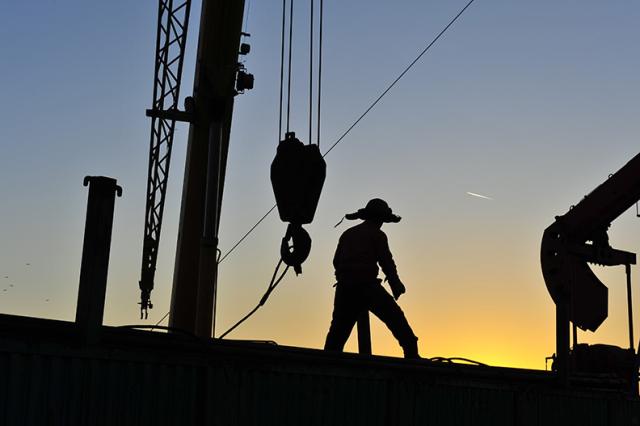
I first wrote about water and hydraulic fracturing in 2013. At the time, Texas, Oklahoma and most other southwestern U.S. states were suffering through a drought that fell somewhere between severe to near catastrophic in its intensity. At the same time, the development of unconventional oil and gas resources was running at a fevered pace. The industry’s thirst for water in the six years since, while significant, was not so great as to slow production down.
Water sourcing has evolved to meet that demand, so too did effective water management solutions. Rather than use freshwater, operators are using recycled water. Water hauling is shifting from trucks to pipelines. Discussions surrounding midstream systems now require clarification—oil, water or both? Frac pond monitoring by satellites orbiting the big blue marble we call Earth is providing key intel on planned or ongoing operations.
“U.S. demand for water management services associated with the acquisition, transport, transfer, storage, flowback, treatment and disposal of water increased 25% in 2018 to $23 billion,” according to Spears and Associates market report on U.S. water management. “This is due to increased horizontal drilling activity, increased per-well frac job size and increased recycling/treatment activity.”
The analysts estimate that 6.4 Bbbl of water were sourced for in drilling and completion (hydraulic fracturing) in the U.S. in 2018, up 43%.
“Water required for drilling and completion is projected to exceed 10 Bbbl by 2023, a 10% CAGR [compound annual growth rate] over the 2018 to 2023 time frame, due to continued growth in drilling and production activity,” according to the report.
In the March issue, E&P features the significant progress made in the oilfield water management space, reviews technologies making an impact and discusses the next generation of water challenges.
Read each of E&P's 2019 Water Management Techbook articles:
OVERVIEWS:
Managing Water for Increasing Production Volumes
As production rates continue to climb, so does the amount of water produced.
Shale Operators Aim to Tame Water Woes in Permian Basin
Companies in the Permian Basin work to get a better handle on water-related issues.
KEY PLAYERS:
Companies Focus on Replacing Freshwater Sources
These 40 companies are representative of some of the key players in water management.
TECHNOLOGY:
Innovation, Ingenuity Drive Changes in Handling Produced Water
New technology is needed to get the most out of one of Earth’s most precious resources.
MIDSTREAM:
Full Immersion: Industry Gets Religion on Produced Water
Volumes could reach 50 MMbbl/d in just the Permian; all options are on the table.
CASE STUDIES:
Adopting an Infrastructure Approach for Produced Water Management
One possible answer to the Permian Basin’s water woes lies in the sands of Oman.
Technology Reduces Produced Water By 50%
Proppant-bonded technology reduces formation water without hindering oil and gas production.
Recommended Reading
For Sale? Trans Mountain Pipeline Tentatively on the Market
2024-04-22 - Politics and tariffs may delay ownership transfer of the Trans Mountain Pipeline, which the Canadian government spent CA$34 billion to build.
Energy Transfer Announces Cash Distribution on Series I Units
2024-04-22 - Energy Transfer’s distribution will be payable May 15 to Series I unitholders of record by May 1.
Balticconnector Gas Pipeline Back in Operation After Damage
2024-04-22 - The Balticconnector subsea gas link between Estonia and Finland was severely damaged in October, hurting energy security and raising alarm bells in the wider region.
Wayangankar: Golden Era for US Natural Gas Storage – Version 2.0
2024-04-19 - While the current resurgence in gas storage is reminiscent of the 2000s —an era that saw ~400 Bcf of storage capacity additions — the market drivers providing the tailwinds today are drastically different from that cycle.



